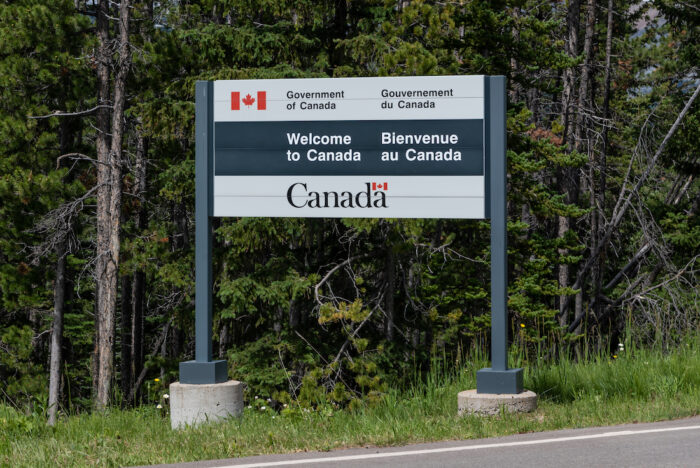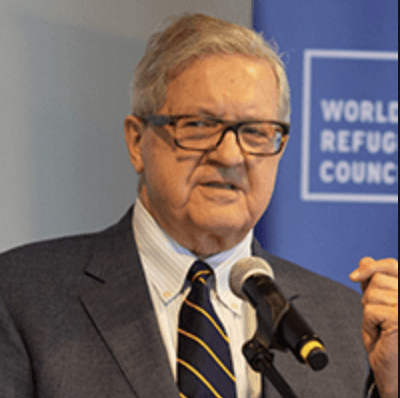Lloyd Axworthy and Allan Rock
This op-ed was first published by The Globe and Mail.
Ottawa pundits say that Prime Minister Justin Trudeau scored a political win by securing President Joe Biden’s agreement to renegotiate the Safe Third Country Agreement (STCA). Henceforth, it will apply across the entire Canada-U.S. border, and asylum seekers can be turned away at any crossing point. Ottawa has thereby responded adroitly to Quebec Premier François Legault’s complaints about the flow of migrants entering Quebec at the infamous Roxham Road border crossing.
But there is something that neither the Prime Minister nor the President mentioned in their announcement: the impact of their decision on the men, women and children fleeing violence and persecution who had hoped to cross the Canadian border after feeling anything but safe in the United States. The vast majority are not in any way a threat to our security. They are ordinary people searching for sanctuary by putting themselves and their families at grave risk on a perilous journey, one they’d hoped would end with a Canadian border crossing.
We are left to imagine the bitter disappointment they will feel when instead of a portal to Canada they are met with a locked gate, a warning sign and no choice but to face the notoriously hostile American border security officials. As we have learned by watching the Mediterranean, some, in their desperation, will look for other points of entry to Canada by taking greater risks and putting their lives in danger. One “loophole” may have been closed, but others will no doubt appear.
“It’s what they deserve,” some will say. “Play by the rules! Don’t jump the queue!” But almost all of them are vulnerable survivors who escaped persecution and oppression simply to assert an ancient right — the right to asylum.
The right to seek asylum is codified in the United Nations’ 1951 Refugee Convention. Before the STCA came into effect in 2002, under international law the convention obligated Canada to allow refugees to enter and remain here until the validity of their claim for asylum could be determined by a tribunal. Under the STCA, Canada effectively subcontracted this obligation to the United States.
There was another matter that neither our Prime Minister nor the President mentioned last week: the constitutional validity of the STCA is to be considered by the Supreme Court of Canada in the coming months. Depending on what the court decides, our government could end up not with a political win, but instead a major loss of credibility. The court could send Parliament back to the drawing board to legislate a new migration policy based on the paramountcy of human rights, instead of expediency.
It is fitting that the issue will hinge on the Charter of Rights and Freedoms, which has had a major influence on Canadian attitudes toward migration. Polls have consistently shown that Canadians have a strong attachment to an open system of immigration. While Mr. Biden and Mr. Trudeau spoke of shared values, there is one major exception: Canadians differ from Americans in our commitment to pluralism and welcoming newcomers. Why, then, are we doubling down on a policy so inconsistent with that distinctive characteristic?
There is a better way. As Minister of Immigration, Sean Fraser demonstrated Canada’s openness by setting a target to welcome half a million newcomers to Canada in 2025. However, he also announced that the number of refugees admitted would be reduced from 76,000 in 2023, to 73,000 in 2025. It is not clear whether the 73,000-person figure will now include the 15,000 Central American migrants Canada promised it would assist the U.S. in resettling during President Biden’s visit last week. In any case, we should scrap the STCA and strive to dedicate 20 per cent of our 2025 immigration goal to the resettlement of forcibly displaced people, taking in at least 100,000 in 2025. We can work to build up the capacity of our U.S. diplomatic posts, and our U.S.-Canada border crossing points, to receive, process and settle those with legitimate asylum claims.
Let’s take on the diplomatic task of building a collaborative, hemispheric migration network and devote the necessary resources to make it work. We can draw on our ability to convene, and our talent for negotiation, by inviting a group of like-minded governments, civil society groups, and international organizations to a summit aimed at reviving and strengthening the imperilled right to asylum. Migration is increasing, driven by climate change and conflict. We have to get things right at our border — politically and morally.
A border that assures security while respecting asylum seekers and welcoming migrants? Now that would be a real win for Canada.
Photo: Wikimedia Commons


